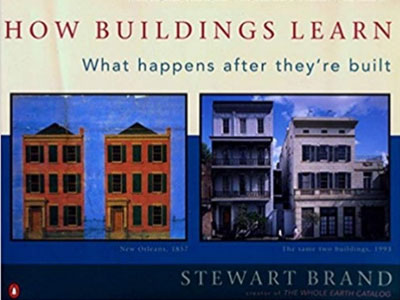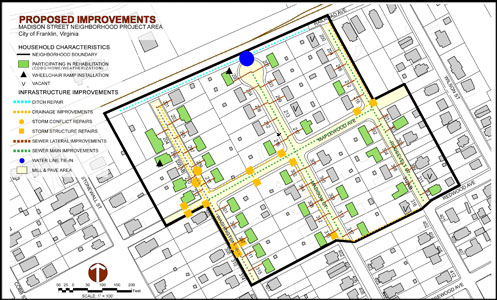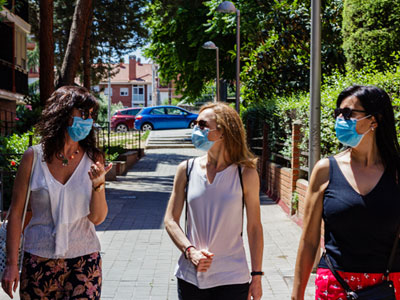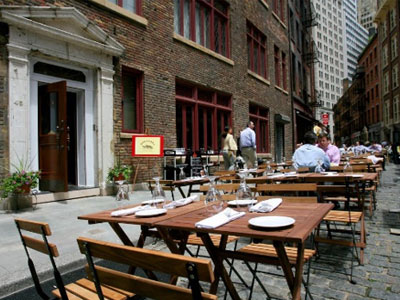Summit is discovering solutions to the question ‘what do we do now, with everything going on?’.
In her previous post, Lisa Cutshaw outlined a number of issues that we, as designers, engineers, and citizens, will need to consider as we move forward in these chaotic times (View the previous post here!). Those issues include ecological encroachment, resilience, values in design, public health, and our health care infrastructure. The design team at Summit will embark on a series of posts, conversations, and idea workshopping to talk about these ideas, from the broad strokes of development’s impact on the environment to the particulars of the materials in elevator cabs or the width of sidewalks.
I’ll start by breaking things down in the language of our industry: planning, investment, design, execution, and occupancy.
Planning
How do we plan for a pandemic and recovery after a pandemic while also planning for other future widespread events? This extends from the scale of urban planning, development plans, landscapes, building layouts, and individual spaces.
Investment
How does this change the value of investments? Can a developer’s pro forma withstand the increase in square footage that distancing seems to demand? Can companies afford to rent larger spaces? Can these issues be balanced and accommodated, or can Work-From-Home relieve this burden in the short term…and does this mean that homes and apartments will need to be reconsidered?
Design
How do we lay things out? How do people circulate? What systems can be implemented to reduce exposure in the workplace, home, or public sphere? Are there materials that can help the situation or different details? Will there be a resulting aesthetic from all of this…and will it be good?
Execution
How does this affect permitting, construction practices, lead times, initial occupancy, and other critical issues to the successful execution of a project?
Occupancy
As designers, architects, and engineers, the issues above are how we typically try to provide the best possible environment for the occupants of our projects, whether it be a private homeowner, a building full of people like workers, students, athletes, fans, government officials, or the visitors to a public street or park. They are the people, all of them, that all of this is for in the end. Can our offices promote cooperative working while allowing social distance? How are people living in apartment buildings or visiting hotels going to behave, and what will they need to feel safe? How do we move on, and what’s the new normal?
In this blog series, we’re going to tackle these sweeping considerations one piece at a time. I’m going to start today with Planning, specifically in relation to some of Lisa Cutshaw’s observations. In other words, I am going to talk about the idea of Resilience as a planning practice.
How can a development plan or a building plan be “resilient”?
How deep does this resilience go?
It’s tempting to think that “things are never going to be the same” or that the concepts we’re trying to implement this summer are going to be lasting or even permanent. It’s not clear that this is the case. It’s quite likely that we will live in a post-COVID-19 world that will feel very similar to what we were doing a year ago. Our current progression seems to suggest our return to stability, to some normal, will be in a year or two, not in five to ten years.
So how can we design things that respond to the current situation while also accommodating a future that is a little more familiar, more “normal,” …or perhaps for a new concern that we’re not even aware of yet? In the book How Buildings Learn by Stewart Brand, he discusses how buildings have resilience not through a designer’s careful knowledge (or prediction) of the future needs that could reshape a building, but by a simple understanding that conditions will change and that we should design to allow change, whatever that change might be.


We have learned a lot this year, particularly that things will change but we don’t know exactly how. With COVID-19, many of us are working from home and trying to spend time outdoors where we’re safer from the contagion. That is until the Eastern Equine Encephalitis Virus is reported in our community, and then suddenly the great outdoors doesn’t seem quite so risk-free anymore. Will EEEV ever escalate to something even close to the current pandemic? Most likely not… but what about a positive disruption to our normal, like self-driving cars? These ongoing questions illustrate the slippery nature of planning for resilience.



More practically, what do we do now? One of the great trends that have been improving our built environment, even before the current situation, is a growing appreciation for certain types of flexibility. Offices have been laid out to accommodate multiple working and communication styles. Housing and apartments are being designed for a range of incomes, ages, and lifestyles. Universities are seeking buildings that fulfill their current needs but with an eye towards future needs. Main Street is being revitalized in existing communities and is being sought after in new developments, which often allows a collection of smaller storefronts that can more nimbly respond to change than big boxes or highly programmed malls. All of this flexibility is a version of resilience and perhaps is a core component of resilience.
These examples illustrate my basic point: we already know how to plan for resilience. We have to make conscious decisions to plan for true resilience to respond to things we can’t fully anticipate. It goes beyond mere flexibility, “configuration A and then configuration B” because we can’t make plans under the assumption that the current information will be determinative or even relevant just a few years down the road. We know things will change, and we know what we need to do. I don’t think we need to plan our cities, our offices, or housing, or our resorts only with constrained notions of “distancing” and “sterilization.” Today’s distancing is tomorrow’s (well, 2022’s) cooperation space! A shuttered shop or café can be a work-from-“home” environment, supporting the workforce and the small business-owner alike. Underperforming hotels could transition to workforce housing…cohousing even. Street parking is being converted to outdoor dining and can be parking again – if we even want it (or if self-driving cars have not made it unnecessary).



With clear-minded planning, we will understand the constraints and opportunities that will lead to resilient future development. . While things may seem uncertain, it might not be as difficult to navigate as it first appears. We’re all staying safe and coming up with new ideas, and we’re excited to make things happen!
In upcoming posts, we will be talking about more opportunities and ideas. We look forward to the developing conversation here at Summit and in our communities.